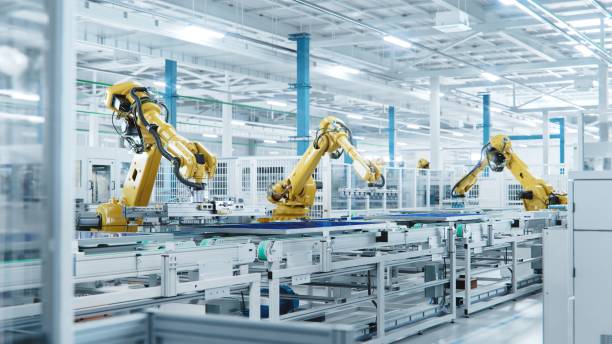Designing adaptable production lines for variable demand
Adapting production lines to fluctuating demand requires a holistic approach that balances flexibility, cost control, and long-term resilience. Effective designs combine modular workflows, scalable automation, data-driven decision-making and maintenance strategies to keep throughput, quality and sustainability aligned as market needs change.

How can manufacturing adapt to demand variability?
Manufacturing adaptability starts with modular layouts and standardized workstations that can be reconfigured quickly as product mix or volume shifts. Flexible tooling, quick-change fixtures and cell-based arrangements reduce downtime when switching tasks. Cross-trained operators and clear process documentation support rapid changeovers, while digital work instructions and traceability help preserve quality across transitions. Planning capacity buffers and building decision rules for when to scale up or down—rather than relying on manual judgments—improves responsiveness without sacrificing consistency.
What role does automation and robotics play?
Automation and robotics provide repeatable capacity and can be scaled incrementally to match demand. Collaborative robots handle tasks that require flexibility and fast redeployment, while fixed automation offers high throughput for stable, high-volume runs. Choosing modular robotic cells and standardized communication protocols minimizes integration time. Automation should be paired with workforce planning so human operators focus on oversight, quality checks and exception handling. The goal is not full replacement but a hybrid system that shifts tasks between humans and machines based on throughput and variability.
How can IoT and analytics enable flexibility?
IoT sensors and analytics turn machine and process data into actionable signals for flexible production. Real-time monitoring of equipment, energy usage and throughput allows dynamic scheduling and predictive adjustments. Analytics can forecast short-term demand patterns and recommend batch sizes or line configurations, improving lead times. Traceability data collected via IoT also supports rapid root-cause analysis when quality issues arise during changeovers. Integrating analytics feeds into production execution systems enables automated decisions that maintain stability while responding to shifting demand.
How to align maintenance and quality practices?
Maintenance and quality must be proactive in adaptable lines. Predictive maintenance informed by condition monitoring reduces unplanned downtime during peak demand, while preventive schedules ensure critical assets remain available for rapid scaling. Quality systems should be embedded into changeover procedures: standardized inspections, inline sensors and traceability records help detect deviations quickly. Training maintenance teams for rapid troubleshooting during configuration changes and using analytics to prioritize interventions keeps both availability and product quality within target ranges.
How do procurement, logistics, and energy affect adaptability?
Procurement and logistics create the supply-side flexibility that production needs. Sourcing agreements with multiple suppliers, flexible order sizes and local services for fast replenishment reduce lead-time risks. Logistics strategies such as postponement, buffer stocking and dynamic routing support variable throughput. Energy management—demand response, on-site storage or phased operation—can lower operating costs and maintain continuity when scaling production. Coordinating procurement, logistics and energy planning with production schedules ensures capacity changes do not create downstream bottlenecks.
How to design for sustainability and traceability?
Sustainable design and full product traceability are compatible with adaptable production. Use energy-efficient equipment and monitor consumption to optimize operations during different production levels. Material choices and waste-minimization practices can be integrated into flexible workflows, while digital traceability systems document materials and process steps across reconfigurations. Sustainability metrics should be part of the decision logic when selecting configurations, so scaling up does not disproportionately increase environmental impact. Traceability also supports compliance and faster recalls when variability introduces risk.
Adaptable production line design combines modular physical layouts, scalable automation and robust digital infrastructure. Embedding IoT, analytics and traceability improves decision-making, while proactive maintenance and aligned procurement and logistics keep throughput reliable. Balancing energy and sustainability considerations with quality controls ensures that responsiveness to variable demand does not compromise long-term resilience or compliance.





